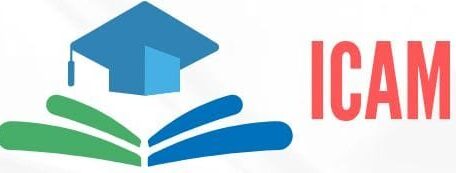Course Content and Syllabus: Emergency Medical Technicians Course
Course Title: Emergency Medical Technicians Course
Institution: Indian Council of Alternative Medicine
Course Overview: The Emergency Medical Technicians (EMTs) course offered by the Indian Council of Alternative Medicine provides comprehensive training for individuals seeking to pursue a career in emergency medical services. This course equips students with the necessary knowledge and skills to provide immediate medical care in critical situations and plays a vital role in saving lives. EMTs are trained to assess patients, administer basic medical treatments, and transport patients safely to medical facilities.

Course Duration: 6 months
Course Curriculum:
- Introduction to Emergency Medical Services
- History and evolution of emergency medical services
- Roles and responsibilities of an EMT
- Professionalism and ethical considerations in emergency medical care
- Anatomy and Physiology
- Overview of human body systems
- Understanding vital signs and their significance
- Common medical terminologies
- Patient Assessment and Triage
- Conducting primary and secondary surveys
- Identifying and managing life-threatening conditions
- Triage principles and prioritization of patient care
- Basic Life Support (BLS)
- CPR techniques for adults, children, and infants
- Automated External Defibrillator (AED) operation
- Airway management and rescue breathing
- Medical Emergencies
- Assessment and management of common medical emergencies (e.g., heart attack, stroke, seizures)
- Administration of emergency medications (as permitted by local regulations)
- Trauma Management
- Evaluation and stabilization of trauma patients
- Techniques for controlling bleeding and managing fractures
- Immobilization and transportation of trauma patients
- Special Patient Populations
- Pediatric emergencies and care considerations
- Geriatric emergencies and age-specific challenges
- Maternal and neonatal emergencies
- Medical Equipment and Emergency Vehicle Operations
- Proper use of medical equipment (e.g., splints, backboards)
- Safe and efficient operation of emergency vehicles
- Vehicle extrication and rescue techniques
- Disaster Management and Mass Casualty Incidents
- Preparedness and response to disasters and mass casualty incidents
- Incident command systems and communication protocols
- Psychological first aid and emotional support
- Legal and Ethical Considerations
- Medical-legal issues and documentation
- Consent and confidentiality in emergency medical care
- Professional codes of conduct and ethical decision-making
Top Recruiting Areas:
- Hospitals and Emergency Medical Centers
- Ambulance Services and EMS Agencies
- Fire Departments and Rescue Services
- Military and Defense Medical Services
- Industrial and Occupational Health Departments
- Educational Institutions (as instructors)
- Cruise Ships and Airlines (for onboard medical assistance)
- Sports and Event Management Companies
- Non-governmental Organizations (NGOs) involved in disaster response
- Private Medical Assistance Companies
Job Positions:
- Emergency Medical Technician (EMT)
- Ambulance Driver and Attendant
- Paramedic
- Emergency Room Technician
- First Aid Trainer
- Industrial Medic
- Flight Medic
- Disaster Response Team Member
- Medical Equipment Sales Representative
- Medical Volunteer Coordinator
Specializations:
- Advanced Cardiac Life Support (ACLS)
- Pediatric Advanced Life Support (PALS)
- Tactical Emergency Casualty Care (TECC)
- Wilderness Emergency Medical Technician (WEMT)
- Critical Care Transport
- Community Paramedicine
- Hazardous Materials Technician
- Search and Rescue (SAR) Technician
- Pre-hospital Trauma Life Support (PHTLS)
- Geriatric Emergency Medical Services
